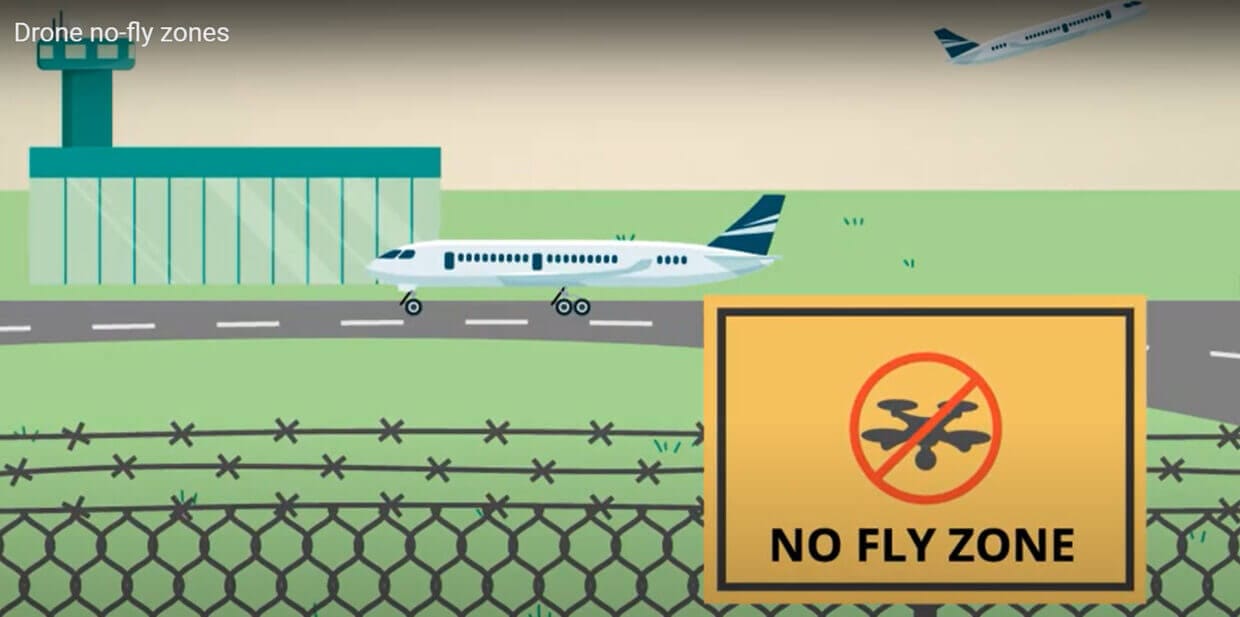
The Part 101 Manual of standards introduced No-Fly zones around all aerodromes in April 2020. The No-Fly zones restrict operations within 3 nautical miles of controlled and non-controlled aerodromes.
No-Fly zones have been introduced:
- Within 3 nautical miles of an aerodrome
- On the departure and approach of an aerodrome
The No-Fly zones vary depending on whether the aerodrome is controlled or uncontrolled. The dimensions of the approach and departure paths are reasonably complex, and a digital means of assessing the location of the operation and the No-Fly zones is favourable.



Relevant airspace and relevant events
Some new terms have been introduced with the Manual of standards
|
relevant airspace means each of the following: (a) the no-fly zone of a non-controlled aerodrome; (b) the no-fly zone of an HLS. |
| relevant event means that a manned aircraft is within relevant airspace, including when the aircraft is in the course of approaching, landing at, taking off from, or manoeuvring on the movement area of, the aerodrome. |
Operations within the No-Fly zone of a non-controlled aerodrome
Excluded and Recreational operations are restricted by CASA Directive 96/17.
Certified operators (RePL + ReOC) are permitted to fly within the No-Fly zones of a non-controlled aerodrome while there is not a relevant event (no piloted aircraft operating in the No-Fly zone). Remote Operators have documented procedures to define how these flights can be undertaken.
For operations that have not been planned to take place during a relevant event, if a piloted aircraft arrive into the no-fly zone the Remotely Piloted Aircraft (RPA) must be safely manoeuvred to land.
The Manual of Standards offers approval to operate during a relevant event in certain circumstances
| Operations can be conducted within the No-Fly zone of a non-controlled airport if they are conducted indoors.
This can be in a building, other structure or underground where the aircraft is wholly contained and physically unable to escape the containment area. People moving into or out of the containment area must be controlled and if the aircraft collides with the containment area no material (aircraft or containment area) can escape and cause injury to those outside of the containment area. |
|
| Tethered operations are where the aircraft is attached to a lead where the aircraft can’t escape. The tether is to be a maximum length of 150ft unless otherwise defined.
Operations can be conducted within the No-Fly zone of a non-controlled aerodrome if the aircraft is tethered with the operator having documented procedures in their operational documentation. Tethered operations can not be conducted in the red area (CASA – black) of the aerodrome within 3nm while there is a relevant event. Operations are conducted Visual Line of Sight
|
|
Defined RPA’s can operate within the No-Fly zones. Defined RPA’s are:
|
Operations within the No-Fly zone of a controlled aerodrome
Excluded and Recreational operations are restricted by CASA Directive 96/17.
Certified operators (RePL + ReOC) require CASA approval to operate within the No-Fly zone of a controlled aerodrome. This limitation comes from the schedule attached to the Remote Operator Certificate.
CASA Approvals
CASA can issue permissions to operate within 3nm of a controlled aerodrome or the No-Fly zone of an aerodrome. CASA Form 101-09 provides a framework for the safety case being put forward for the approval. CASA permissions can take some time to be processed, and there is a fee based on the complexity of the task. It is recommended to get approvals into CASA in a timely fashion to avoid disappointment.
Aviassist provides a service to apply for approvals including airport no-fly zones.
